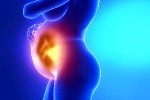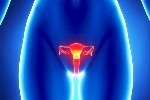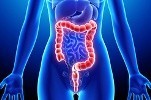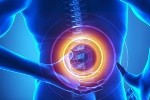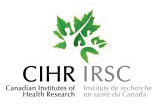Pain Management Program
Advanced Acupuncture and Herbs (AAH) Clinic in Toronto offers effective and compassionate, multidimensional pain relief treatments using traditional Chinese medicinal techniques, Acupuncture, massage therapy and cupping, Call 416 399-3888 to find out more.
Traditional Chinese medicinal techniques include acupuncture, massage, acupressure, tuina (massage), cupping and psychotherapy and other treatments, as needed.
We comprehensively evaluate all patients before deciding on a course of pain treatment. Our practitioners are trained medical doctors and hold further masters and other degrees in both conventional and traditional Chinese medicine. All our practitioners have a registered licence for Acupuncture and Traditional Chinese medicine and have widespread practical experience in treating patients both in Canada and overseas.
AAH is not only a center for assessment and treatment but is also a basic and clinical research facility in which we investigate and advance mechanisms and treatments for functional, integrated, multi-dimensional pain relief. We also focus on communicating and educating other people about the prevention and effective management of pain.
Our comprehensive evaluations and customised programmes using acupuncture, massage, acupressure, tuina massag, cupping and other proven pain treatment techniques are ideal for the following types of conditions, among others:
- All types of headache (including tension headaches, recurrent migraines, etc)
- Paralysis caused by stroke
- Bell’s palsy
- Atypical facial pain
- Neck pain (including whiplash)
- Neck and shoulder pain (computer user)
- Shoulder pain (frozen shoulder)
- Tennis elbow
- Carpal tunnel syndrome
- Lower back pain (acute-muscle sprain and sciatica )
- Chronic back pain (sciatica and herniated and degenerated disc)
- Myofascial pain and fibromyalgia
- Post-traumatic syndromes
- Herpetic neuralgia
- Chronic pelvic region pain (women and men)
- Temporomandibular disorders (TMD)
- Trigeminal neuralgia
Research into Acupuncture Mechanisms
Research shows that acupuncture is a useful and relatively safe short-term treatment for non-inflammatory musculo-skeletal pain.
It is not known how much of this is due to the placebo affect and how much is due to actual therapeutic pain relief, or how exactly acupuncture’s therapeutic pain relief works.
Much research works has already highlighted acupuncture’s therapeutic effects on the immuno-inflammatory response and the hypothalamic–pituitary axis [1, 2]. Other research has focused on the peripheral and central neural mechanisms, including spinal gating and descending inhibitory pathways, that might explain the clinical observations of short-term pain relief.
In laymen’s terms, this theory proposes that acupuncture works by blocking the way in which the neurons are able to carry the sensation of pain to the brain, effectively preventing the neurons from transmitting their message. At the same time, the slight pain caused by the pin-prick of acupuncture needles may stimulate the body’s opioid-, serotonin- and noradrenergic-systems [11] to release natural opiate pain killers that effectively deaden the pain sensation much in the way that local anaesthetic works.
It is recognized that the drug naloxone, which reverses the chemical effects of pain killing drugs within the body, also inhibits the pain killing effects of acupuncture, which suggests that the same neural pathways are used.
The involvement of the spinal gating and descending inhibitory pathways mechanisms in acupuncture is supported by animal experiments. However, the pain-killing effects from these mechanisms are only short-lived and fail to explain the delayed, prolonged and more long-term analgesia cited with therapeutic acupuncture.
A more probable hypothesis for acupuncture’s long term therapeutic effects is neuroplasity (changes that take place in the brain) although the specific understanding of the molecular mechanisms of neuroplasticity is still incomplete.
We know that behaviour is influenced by underlying neural patterns that in turn are dependent upon connections between neurons. We also now know that the central nervous system can adapt its structure and function according to changes in inputs (neuroplasticity) and is not, as originally believed, hard-wired with fixed neuronal circuits. Changes in the way in which neurons interconnect can therefore affect the way in which the brain receives information to process.
Research by Napadow et al. suggests that acupuncture may stimulate neurogenesis from stem cells and may lead to a central reorganization of the somato-sensory cortex which in turn may lead to a long-term depression of the ability of neurons to transmit messages. It appears that the acupuncture stimulus affects the density over time of NMDA receptors and that this affects the patient’s perception of pain.
Further research is needed so that we can develop a deeper understanding of how experiences such as acupuncture can cause long-term effects on pain behaviour.
For more information on acupuncture can its role in pain relief please call our Richmond Hill, Aurora or Markham clinic on 416 399-3888.
Spinal Gating
Pain is mediated by two types of peripheral fibres: myelinated A-fibres responsible for sharp, well-localized pain (‘fast’ pain) and smaller unmyelinated C-fibres responsible for prolonged and
ill-defined pain (‘slow’ pain).
Melzack and Wall’s [3] gate theory proposes that the substantia gelatinosa (SG) layer of the super-ficial dorsal horn of the spinal cord can be ‘opened’ by these nociceptive fibres and ‘closed’ by
larger fibres (A) or by descending control.
Electroacupuncture stimulates the large A-fibres [4] and is presumed to activate this gating mechanism. Manual acupuncture stimulates A-fibres [5, 6] that synapse with inhibitory inter-neurons within
the dorsal horn. This can inhibit central pain transmission through enkephalin-dependent mechanisms [7, 8].
For inhibition to occur at the spinal level the stimulus is applied to the same spinal segment as the pain source (segmental acupuncture) though not necessarily directly into the trigger point.
Segmental acupuncture is opioid-dependent as evidenced by naloxone blocking or reversing any analgesic response [9].
Pain relief by local anaesthetic injection into trigger points is also reversed by naloxone suggesting that similar neural pathways are involved [10]. Spinal inhibition, however, only occurs during
needle stimulation and thus it may explain immediate pain relief but cannot explain any delayed or prolonged analgesic effect from therapeutic acupuncture.
Descending Inhibitory Pathway
Over the last few decades much has been written on the importance of descending inhibitory pathways for acupunctur analgesia involving opioid-, serotonin- and noradrenergic-systems [11].
Peripheral stimulation by a noxious stimulus, such as pinprick, results in impulses ascending in the spinothalamic pathway to the thalamus.
At the midbrain a collateral pathway projects to the periaqueductal grey area (PAG). Electrical stimulation of the PAG leads to analgesia that is reversed by naloxone [12]. Neurones from the PAG
preoject to the nucleus raphe magnus of the medulla and from there serotonergic fibres descend to the stalked cells of the dorsal horn where release of enkephalin inhibits SG cells [6, 7] thereby
blocking the centripetal transmission of pain from C-fibres.
By peripheral stimulation acupuncture can activate this loop leading to descending inhibition. Thus in animal experiments, methysergide, a serotonin antagonist impairs the analgesic effects of
acupuncture [13], whilst pargyline, which blocks serotonin degradation, potentiates the analgesia [11].
Simultaneous inhibition of opioid and serotonin leads to a dramatic reduction of acupuncture analgesia [14]. A number of other descending inhibitory systems may be involved including a noradrenergic
pathway as demonstrated by Takeshige et al. [15] who showed antagonism of acupuncture analgesia with phentolamine administration. A further opioid-mediated pathway, diffuse noxious inhibitory control
(DNIC) was described by Le Bars et al. [16].
DNIC is the phenomenon where the pain-transmitting spinal dorsal horn neurons are strongly inhibited when a nociceptive stimulus is applied to any part of the body, distinct from their excitatory
receptive fields. DNIC works via opioid-mediated descending pathways from the subnucleus reticularis dorsalis of the caudal medulla; these fibres project down to all spinal levels to have an
inhibitory effect following A-fibre stimulation [17].
DNIC has been suggested as the mechanism of pain relief when acupuncture needles are inserted at sites distant from the pain source (extrasegmental acupuncture) [18].
The involvement of the above mechanisms in acupuncture is supported by animal experiments. However, the inhibitory effects from these mechanisms are only short-lived [19]. Animal experimentation can
thus explain the short-term effects of acupuncture analgesia generally seen in electroacupuncture but fail to explain the more long-term, delayed and prolonged analgesia cited with therapeutic
acupuncture. Hence, most animal studies cannot be easily extrapolated to the usual clinical setting. A more probable hypothesis to explain any prolonged effects of acupuncture is neuroplasity.
Neuroplasticity
How could therapeutic acupuncture change the functional output of the pain neuromatrix to cause longer-lasting effects? It is now accepted that the central nervous system is not, as originally
believed, hard-wired with fixed neuronal circuits but instead can adapt its structure and function according to changes in inputs ( neuroplasticity). Behaviour is influenced according to the
underlying neural patterns that in turn are dependent upon neuron-neuron connections.
Neuronal reorganization can occur with or without structural change both centrally and peripherally. These mechanisms include pre- and post-synaptic alterations in membrane potential and changes in
post-synaptic receptor density. These mechanisms do not alter the basic structure of the neuron—no new synapses or
changes in axon or dendrite structure are needed.
Alternatively structural synaptic changes can occur as a result of new axonal boutons (pre-synaptically) or dendritic spines (post-synaptically) and depend upon protein synthesis. Whole axonal or
dendritic growth can occur to develop completely new synapses and result in ‘rewiring’. Equally, synapses may be lost through the destruction of boutons or dendritic spines [20].
Finally, neurogenesis from stem cells plays an important role to place new neurons within existing circuits. Such changes can lead to long-lasting changes in synaptic efficiency, either long-term
potentiation (LTP) or long-term depression (LTD) of synaptic strength. Evidence that such mechanisms are important in the therapeutic effect of acupuncture is emerging.
Napadow et al. [21] demonstrated that acupuncture’s beneficial effects correlate with a reorganization centrally of the somatosensory cortex comparing baseline and 5-week functional MRI scans when
digits 2,3 and 5 are stimulated. No such changes were seen in a healthy control group. Peripherally, low-frequency stimulation of A-fibres in vitro has been shown to cause LTD of post-synaptic
potentials within the substantia gelatinosa [22].
The NMDA (N-methyl-D-aspartic acid) receptor appears to be crucial in this process since application of an NMDA receptor antagonist abolishes spinal LTD [23]. The density of these receptors on the
post-synaptic membrane can be altered by afferent stimulation and this effect occurs gradually over hours or days [24]. The understanding of the molecular mechanisms of neuroplasticity is incomplete
but further studies may lead to a deeper understanding of how experiences such as acupuncture could cause long-term effects on pain behaviour.
References
1. Zijlstra FJ, Berg-de-Lange I, Huygen FJPM, Klein J. Anti-inflammatory actions of acupuncture. Mediat Inflamm 2003;12:59–69.
2. Karst M, Scheinichen D, Rueckert T et al. Effect of acupuncture on the neutrophil respiratory burst: a placebo-controlled single-blinded study. Complement Ther Med 2003;11:4–10.
3. Melzack R, Wall PD. Pain mechanisms: a new theory. Science 1965;150:171–9.
4. Bowsher D. The physiology of stimulation-produced analgesia. Acupunct Med 1991;9:58–6 0 Chiag CY, Chang CT et al. Peripheral afferent pathway for acupuncture analgesia. Sci Sin 1973;18:651–38.
5. Chiag CY, Chang CT et al. Peripheral afferent pathway for acupuncture analgesia. Sci Sin 1973;18:651–38.
6. Guowei L, Rongzhao L, Jingqiang X et al. Role of peripheral afferent nerve fiber in acupuncture analgesia elicited by needling point zusanli. Sci Sin 1979;22:680.
7. Gobel S, Falls WM, Bennett GJ et al. An E.M. analysis of the synaptic connections of horseradish peroxidase filled stalked cells and islet cells in the substantia gelatinosa of the adult cat spinal cord. J Comp Neurol 1980;194:781–807.
8. Sugiura Y, Lee CL, Perl ER. Central projection of identified, unmyelinated (C) afferent fibers innervating mammalian skin. Science 1986;234:358–61.
9. Mayer DJ, Price DD, Rafii A. Antagonism of acupuncture analgesia in man by the narcotic antagonist naloxone. Brain Res 1977;121:368–72.
10. Fine PG, Milano R, Hare BD. The effects of trigger point injections are naloxone reversible. Pain 1988;32:15–20.
11. Han JS, Terenius L. Neurochemical basis of acupuncture analgesia. Ann Rev Pharm Toxicol 1982;22:193–220.
12. Hosobuchi Y, Adams JE, Linchitz R. Pain relief by electrical stimulation of the central grey matter in humans and its reversal by naloxone. Science 1977;177:183–6.
13. Takeshige C, Tanaka M, Sato T et al. Mechanism of individual variation in effectiveness of acupuncture based on animal experiment. Eur J Pain 1990;11:109–13.
14. Zhou ZF, Xuan YT, Han JS. Blockade of acupuncture analgesia by intraventricular injection of naloxone or cianserin in the rabbit. Acupunct Res 1982;7:91–4.
15. Takeshige C, Sato T, Mera T et al. Descending pain inhibitory system involved in acupuncture analgesia. Brain Res Bull 1992;29:617–34.
16. Le Bars D, Dickenson AH, Besson JM. Diffuse noxious inhibitory controls (DNIC). I—Effects on dorsal horn convergent neurones in the rat; II—Lack of effect on non-convergent neurones, supraspinal involvement and theoretical implications. Pain 1979;6:283–327.
17. Bing Z, Villanueva L, Bars D. Acupuncture-evoked responses of subnucleus reticularis dorsalis neurons in the rat medulla. Neuroscience 1991;44:693–703.
18. Talbot JD, Duncan GH, Bushnell MC. Effects of diffuse noxious inhibitory controls (DNICs) on the sensory-discriminative dimension of pain perception. Pain 1989;36:231–8.
19. Carlsson C. Acupuncture mechanisms for clinically relevant long-term effects reconsideration and a hypothesis. Acupunct Med 2002;20:82–99.
20. Woolf CJ, Salter MW. Neuronal plasticity: increasing the gain in pain. Science 2000;288:1765–9.
21. Napadow V, Liu J, Li M et al. Somatosensory cortical plasticity in carpal tunnel syndrome treated by acupuncture. Hum Brain Mapp 2007;28:159–71.
22. Sandkuhler J, Randic M. Long-term depression of primary afferent neurotransmission induced by low frequency stimulation of afferent A fibres. In: Jenson TS, Turner JA, Wiesenfeld-Hallin Z, eds. Proceedings of the 8th World Congress of Pain. Seattle: IASP Press, 1997.
23. Sandkuhler J. Long-lasting analgesia following TENS and acupuncture: spinal mechanisms beyond the gate control. In: Devor M, Rowbotham MC, Wiesenfeld Hallin Z, eds. Proceedings of the 9th World Congress of Pain. Seattle: IASP Press, 2000.
24. Pe" rez-Otan ̃ o I, Ehlers MD. Homeostatic plasticity and NMDA receptor trafficking. Trends Neurosci 2005;28:229–38.
Contact Us
Chalmers Medical Building
328 Hwy 7 East Suite 201,
Richmond Hill ON L4B 3P7
Tel: 416 399-3888
E-mail: info@aahclinic.com
Conditions Treated
Effective Herbal Therapy for Inflammatory Bowel Disease
NO Surgery!
Carolyn XU Treats Ulcer Colitis Successfully
Considering Therapy?
Resource Links
References
Donation
Great things happen when you put your heart into it.
Click Here to Send us your request
Tips
Questions about your first appointment or if your insurance will cover the cost? Find more information below.


